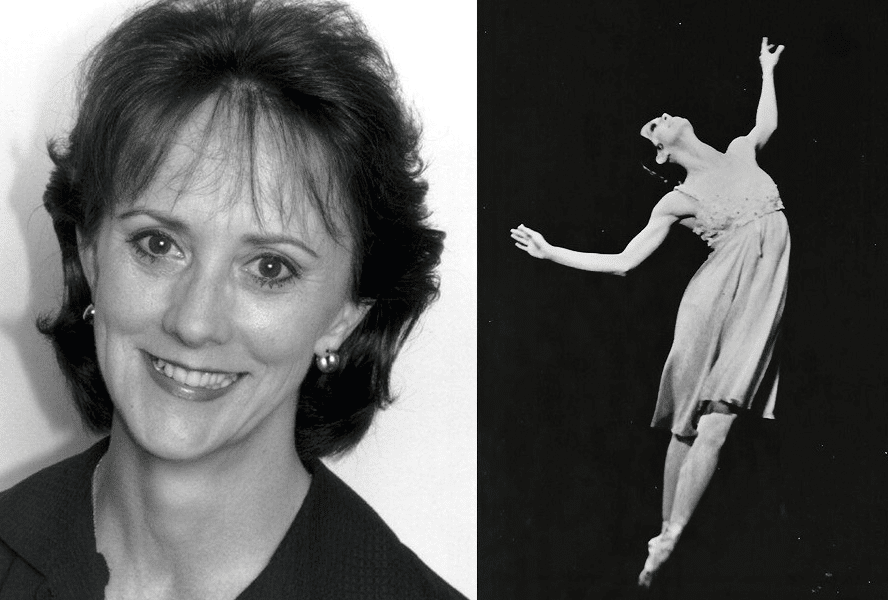
Ballet Arkansas presents a vibrant repertory of the classics, masterworks of American dance, and premieres by the world’s most daring dance makers, reaching an audience of more than 40,000 per year. The organization’s programming now reaches all 50 states and 24 countries. Under the visionary leadership of Michael and Catherine Fothergill, Ballet Arkansas’s company of 15 dancers is ranked among the Top 100 Ballet Companies in America by the Dance Data Project. The organization is firmly committed to equity and inclusion and to bringing diverse populations together to experience the power and beauty of dance.
Ballet Arkansas performs the regional premiere of Arpino’s Reflections on a program entitled “Modern Masters” April 21–23. Staging the work is Charthel Arthur Estner, executive director of the Gerald Arpino Foundation.
Charthel Arthur Estner performed with The Joffrey Ballet for 13 years as a principal dancer throughout the U.S., Russia, Canada, London, and Vienna. She created roles and performed in many works, including Arpino’s Viva Vivaldi, Kettentanz, and Trinity, and works by Joffrey, Balanchine, Robbins, DeMille, Tudor, Ailey, and more. She also served as the Joffrey’s ballet master. She and her husband, Robert Estner, established what is now the School of the Grand Rapids Ballet, and she served as artistic director of the ballet company for 10 years. She became the Joffrey’s ballet master in 1998, and she has staged Arpino ballets throughout the U.S. and overseas.

Charthel Arthur Estner’s thoughts and reflections:
What are some highlights of your personal history performing and setting Arpino works?
From the first day I arrived at the Joffrey School in New York City, I and my fellow dancers called Gerald Arpino “Gerry” and Robert Joffrey “Mr. Joffrey.” Gerry was like a big brother pushing us to be better, using our bodies more, moving fuller through space. At first, I was scared of him and I wasn’t a good muse for his choreography. During my early years of ballet training in Pasadena, California with a single teacher, we were expected to do exactly what she asked in rehearsals, no deviations. Gerry’s method of choregraphing was entirely different. He gave you a series of steps and combinations but he liked the dancers to add their personal style. He actually wanted us to try different ways of moving and using our bodies. Then he molded the steps and produced exciting and unique choreography. As I matured as a dancer and artist, I understood his method of choreographing and ended up in most of his early ballets. It was always a challenging and special experience working with Gerry. His was tough love.
What does it mean to you to work on Reflections for Ballet Arkansas as we celebrate Mr. Arpino’s centennial?
When a dancer is in the original cast of a ballet, it is always special to them because they are truly there from its inception. Like a piece of sculpture, the choreography is molded, changed, added to, taken away, and eventually a beautiful piece of art is produced. I think another part of my special feeling for Reflections is that, when it premiered in February 1971, I was less than two months from getting married, a very positive and special time of my life. Also, Gerry picked the exquisite Tchaikovsky music “Variations on a Rococo Theme for Violoncello and Orchestra.” It is always an uplifting experience to dance to or to stage a ballet with wonderful music.
How would you describe the Arpino style? What are some distinctive elements of his choreography? Do you think his style changed at all when he created Reflections?
The distinctive Arpino style consists of some very particular components. The Arpino style always conveys great energy even in a slow pas de deux, which means that the dancer uses every part of their body to the utmost; bend, twist, lean, move across the stage in an instant, jump higher to convey flight and energy. Gerry literally loved movement, very slow and very fast. One thing he didn’t always want more of was pirouettes, although I think his lack of interest occurred more frequently when he got older. Another unique quality in his choreography, especially compared to many currently choreographed ballets, is that he wanted the dancers to look at each other, relate to each other, and enjoy dancing together on stage. This meant a dancer used their face on the stage. Gerry’s all-encompassing style was to entertain the audience, not to educate them. With that said, though, in his early years, a few of his ballets dealt with current events. The Clowns from 1968 and Trinity from 1970 were certainly thought-provoking besides being entertaining.
How does dancing Arpino ballets prepare a dancer for other types of repertory?
His works are, quite simply, very difficult. They are challenging and definitely push the dancer to grow in technique, movement quality, and partnering abilities. As a répétiteur of many of Gerry’s ballets, it gives me such pleasure to see young dancers literally improve before my eyes.
